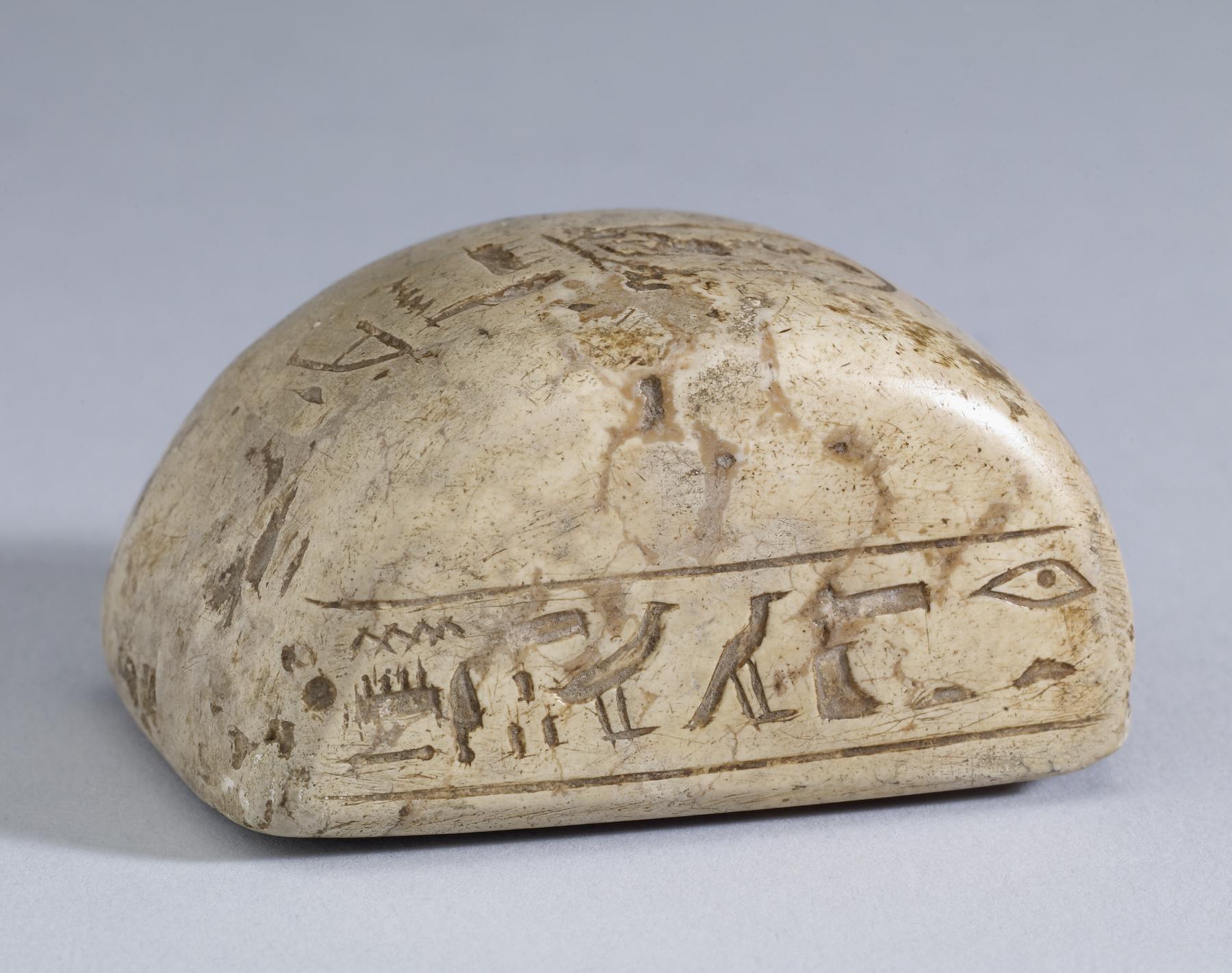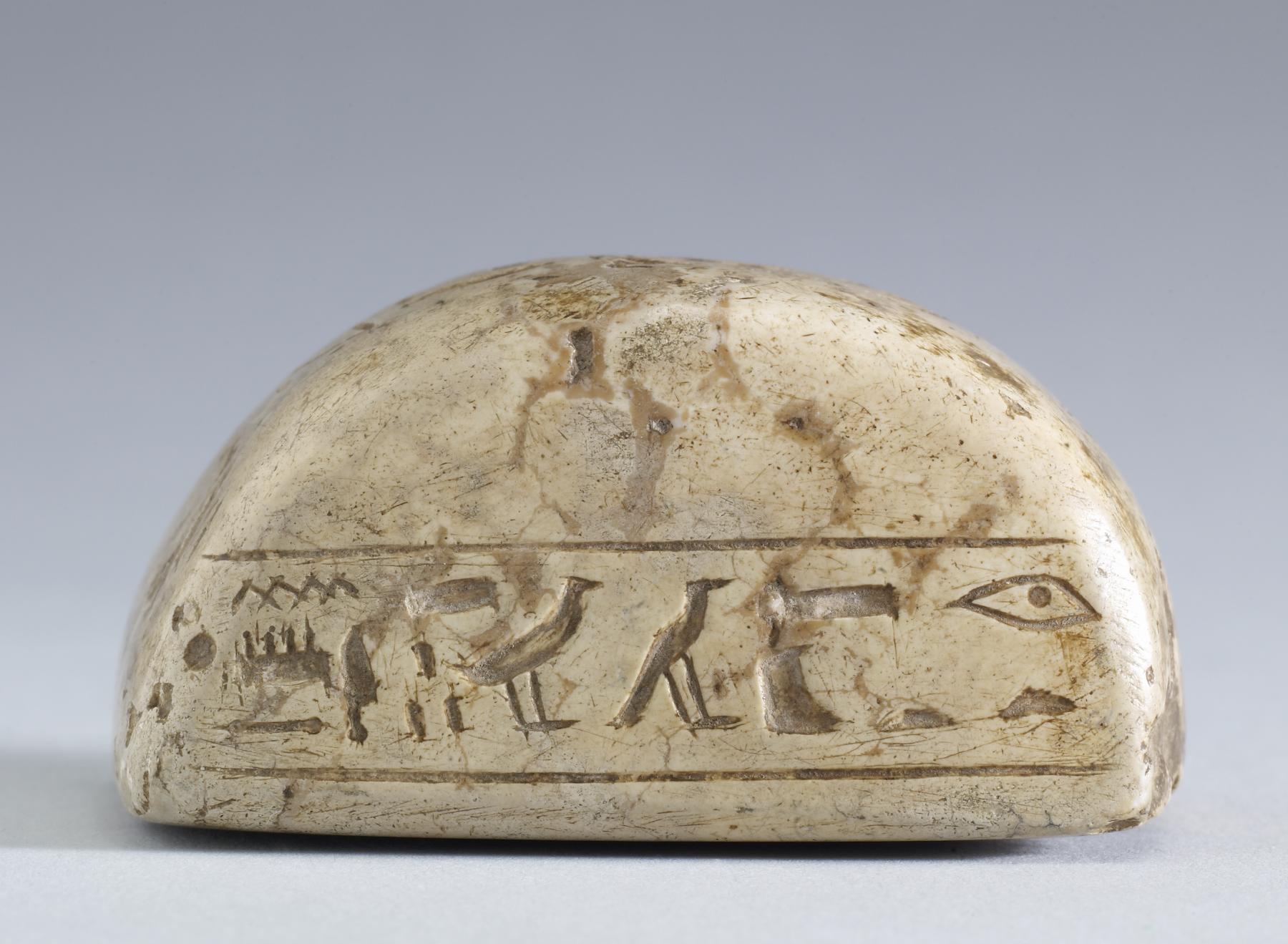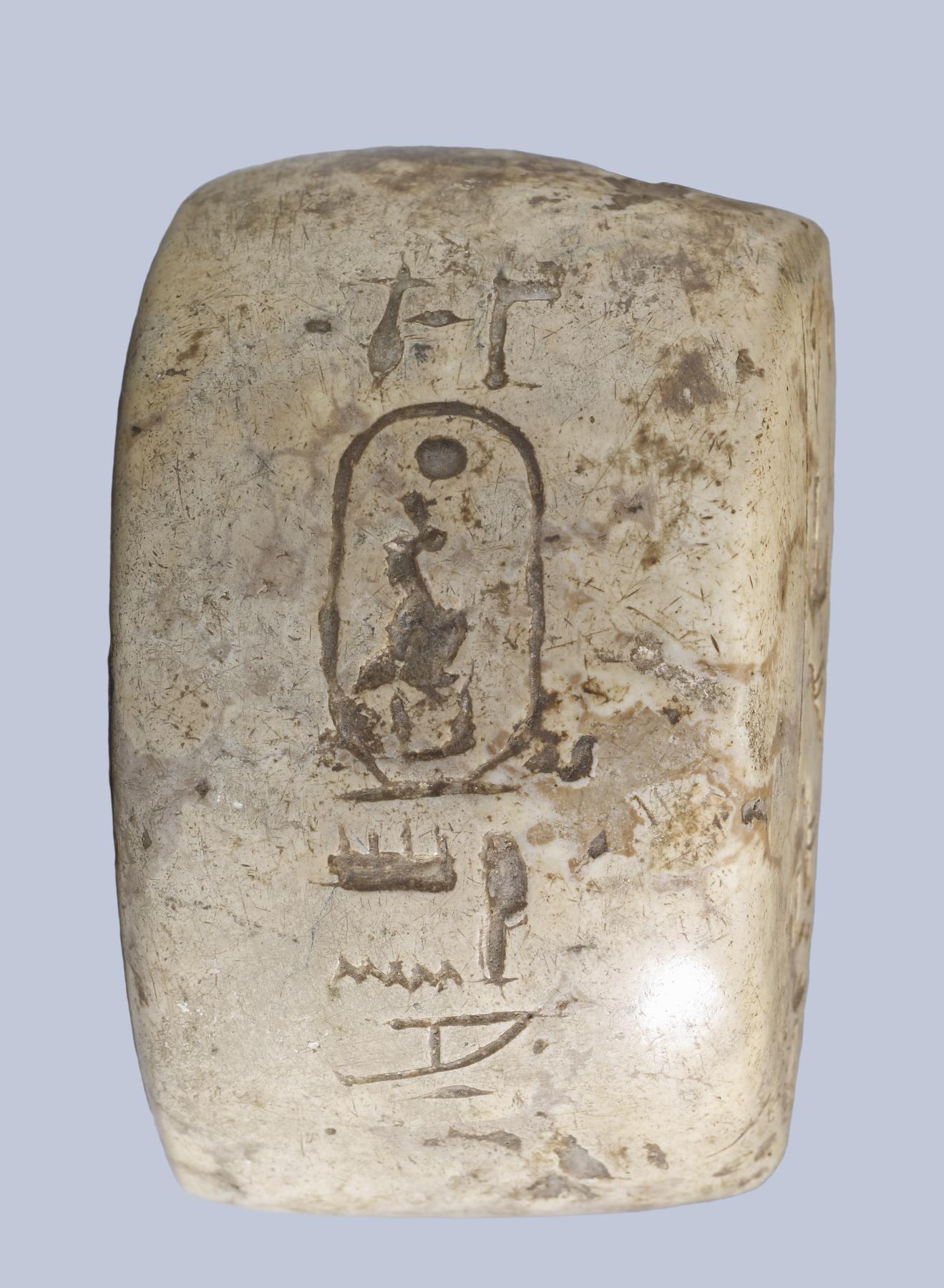Foundation Stone with Inscriptions
(Ancient Egypt and Nubia )
Daughter of King Thutmose I and wife of her half-brother, King Thutmose II, Queen Hatshepsut eventually ruled Egypt as pharaoh in her own right. This commemorative stone was placed at a construction site, probably of the temple built for her at Deir el-Bahari, one of the most beautiful monuments of ancient Egypt. It bears the queen's throne name, Maat-ka-re, as well as that of the temple's architect, Senenmut.
Inscription
Provenance
Provenance (from the French provenir, 'to come from/forth') is the chronology of the ownership, custody, or location of a historical object. Learn more about provenance at the Walters.
Rev. William MacGregor Collection Sale, Sotheby's, London, 1922, p. 83, no. 648; Dikran Kelekian, Paris and New York [date and mode of acquisition unknown]; Henry Walters, Baltimore, 1923, by purchase; Walters Art Museum, 1931, by bequest.
Conservation
| Date | Description | Narrative |
|---|---|---|
| 9/17/1998 | Examination | survey |
Geographies
Egypt, Western Thebes (Deir el-Bahri) (Place of Origin)
Measurements
15/16 x 2 1/8 x 1 3/8 in. (2.4 x 5.4 x 3.5 cm)
Credit Line
Acquired by Henry Walters, 1923
Location in Museum
Accession Number
In libraries, galleries, museums, and archives, an accession number is a unique identifier assigned to each object in the collection.
In libraries, galleries, museums, and archives, an accession number is a unique identifier assigned to each object in the collection.
41.30










